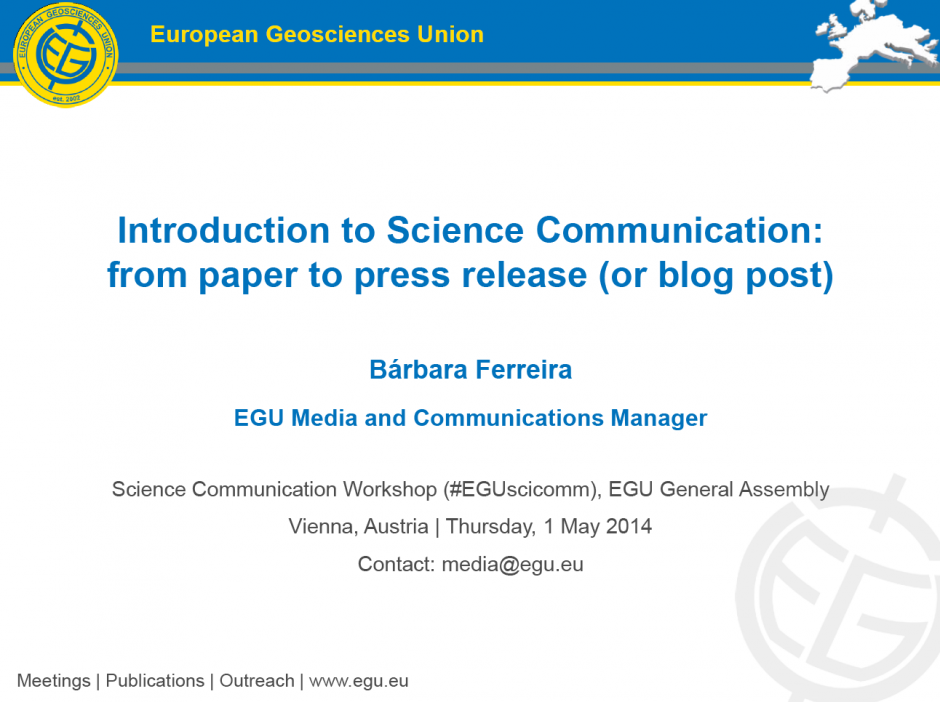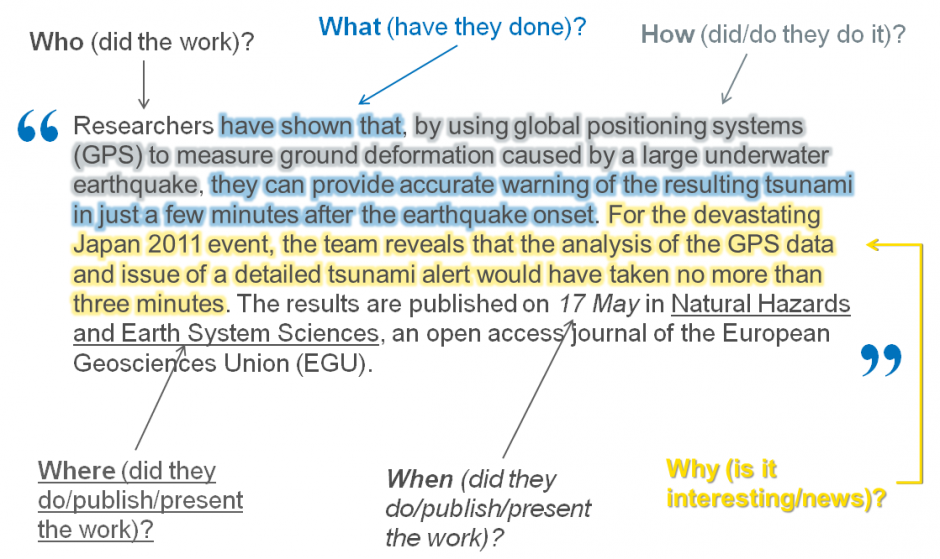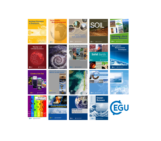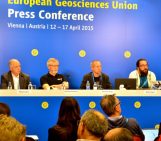During the General Assembly, EGU Media and Communications Manager Bárbara Ferreira shared her science writing skills and media know-how in a workshop demonstrating how to write a press release or post about the latest geoscience. Here are her take-home messages…
“When you communicate science, no one else is more important than your audience.” Bárbara opened with one of the most fundamental points of science writing – you have to keep your audience engaged, and pitch your explanation at the perfect level for your peers, the press or the general public, depending on who you’re shooting for. The other fundamental: “read the paper!” was quick to follow.
The abstract, introduction and conclusion tell you almost everything you need to know to share the science effectively, but important points can still be found in other parts of the paper. Read it thoroughly and unleash the highlights in your writing – explain what’s exciting about the research and why your audience would be interested in it.

The presentation. Click the image or follow this link to view the full presentation. (Credit: Bárbara Ferreira)
If you have time, get in touch with the author. Not only can they check you’ve hit all the main points in your article, but they can also provide you with some juicy quotes to make the piece that much richer.
So how should you structure your post or press release to make sure you keep your readers engaged? Start with the main points – but don’t overstate the findings – and then move on to why the research is important and what the implications of the findings are. More detailed explanations follow. The example below sums up what you need to get across in the beginning of the text, particularly if you’re writing a press release (journalists are always busy so need the essential information at the start).
Before they even get there though, your reader has to be hooked by the title – make it snappy!

The essentials of the introduction – particularly pertinent to press releases. (Credit: Bárbara Ferreira)
You’ve got the structure sorted, but what about content? Here are some of Bárbara’s top tips:
- Assume your reader knows nothing about the research, but don’t assume they won’t understand it
- Aim for one idea per sentence and one concept per paragraph to get your message across without overloading your audience with information
- If you need to use jargon, explain what it means, and keep acronyms to the barest minimum
- Use metaphors and everyday examples to share your message
Unlike this string of dos and don’ts, your article shouldn’t be a steam of facts. Create a story to guide the reader through the findings and, if you can, add a human element to the tale so readers can relate to it all that little bit better.
Once you’re done, fact-check, edit, proof and publish.
There are no hard and fast rules for science writing – this only a guide to get you going. If every science piece or release was written the same way, well, reading them would become a bit monotonous wouldn’t it? Break these rules, make your own, and keep writing until you find your own signature science communication style.
By Sara Mynott, EGU Communications Officer
Resources:
- A manifesto for the simple scribe – my 25 commandments for journalists by Tim Radford
- Science communication handbook: the news media by Katherine Adamson, Tim Lane and Richard Selwyn Jones.
- Press release guidelines for scientists, ESA.


